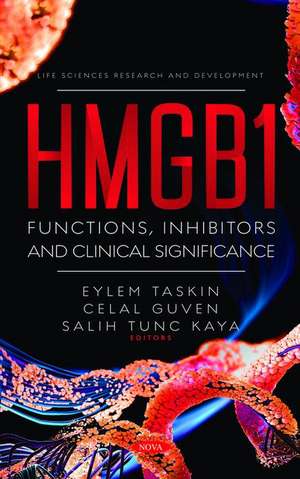HMGB1: Functions, Inhibitors and Clinical Significance
Editat de Salih Tunc Kaya, Celal Guven, Eylem Taskinen Limba Engleză Hardback – 7 dec 2022
Preț: 844.33 lei
Preț vechi: 981.77 lei
-14% Nou
Puncte Express: 1266
Preț estimativ în valută:
161.56€ • 169.11$ • 134.47£
161.56€ • 169.11$ • 134.47£
Carte disponibilă
Livrare economică 10-24 martie
Preluare comenzi: 021 569.72.76
Specificații
ISBN-13: 9798886974089
Pagini: 280
Dimensiuni: 152 x 229 mm
Greutate: 0.55 kg
Editura: Nova
Colecția nova
Pagini: 280
Dimensiuni: 152 x 229 mm
Greutate: 0.55 kg
Editura: Nova
Colecția nova
